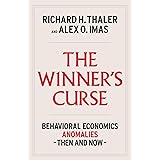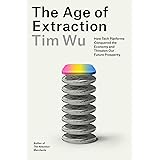The efficacy of gold as an investment asset is frequently juxtaposed against diversified equity indices, a comparison thoroughly examined in the preceding video. The analysis of a $1,000 investment made in 1989 vividly illustrates this dynamic, revealing significant divergences in long-term returns between these two prominent asset classes. Understanding these performance disparities is crucial for any sophisticated investor considering strategic asset allocation.
The video clearly demonstrates that while gold may appeal to certain investment philosophies, its historical capital appreciation often lags behind the robust growth seen in broader equity markets. This observation forms the bedrock for a deeper exploration into the roles and characteristics of gold versus equities within a well-constructed portfolio.
A Historical Look: Gold Versus the S&P 500
A tangible comparison was drawn, beginning with a $1,000 investment in gold during 1989. On February 10, 1989, gold was priced at $389 per ounce, meaning approximately 2.57 ounces could be acquired. Today, with gold reaching roughly $2,000 per ounce, this initial gold investment would be valued at a little over $5,000. This represents a respectable, albeit not extraordinary, gain over several decades.
Conversely, an identical $1,000 allocated to the S&P 500 in early February 1989, when the index opened at just over $297, would have purchased approximately 3.36 shares. With the S&P 500 now sitting near the $4,000 mark, the present value of those shares would be approximately $13,806. This stark contrast underscores the significant difference in wealth accumulation achieved through broad market equities compared to the precious metal over the specified long-term horizon. An opportunity cost of over $8,000 was realized by prioritizing gold over the S&P 500 during this period.
The Allure of Gold: More Than Just Capital Appreciation
Despite the S&P 500’s demonstrably superior returns in the cited period, gold retains a unique, often debated, position in investment discussions. Its appeal is frequently derived from attributes extending beyond mere price appreciation. Gold is fundamentally viewed as a store of value, particularly across extended economic cycles.
Gold as a Safe Haven and Inflation Hedge
For centuries, gold has been recognized as a safe haven asset, offering protection during periods of economic uncertainty, geopolitical instability, or market downturns. It is often perceived to hold an inverse correlation to traditional financial assets such as equities, meaning its value may appreciate when stock markets falter. This de-correlation can act as a natural hedge, potentially dampening overall portfolio volatility during times of crisis.
Furthermore, gold is frequently considered an inflation hedge. When fiat currencies lose purchasing power, the intrinsic value of real assets, like precious metals, is theoretically preserved. This attribute becomes particularly relevant during inflationary regimes where the cost of living rises persistently. Gold, much like an unmoving anchor in a storm, provides a psychological and tangible sense of security against the eroding effects of monetary expansion.
The Dynamics of Gold Pricing
The price of gold is influenced by a complex interplay of factors that extend beyond simple supply and demand fundamentals. Global economic conditions, interest rate movements, the strength of the U.S. dollar, and central bank reserve policies all exert considerable influence. For instance, higher real interest rates typically increase the opportunity cost of holding non-yielding assets like gold, potentially suppressing its price. Conversely, periods of quantitative easing or negative real interest rates can bolster its attractiveness.
Geopolitical tensions, such as regional conflicts or trade wars, historically drive demand for gold as investors seek refuge from systematic risk. Mining supply and recycled gold also play roles, but these are often overshadowed by shifts in investment sentiment and macroeconomic indicators. Understanding these nuances is critical for anticipating potential movements in gold as an investment.
The Engine of Equity Growth: Understanding S&P 500 Performance
The S&P 500, a benchmark for large-cap U.S. equities, has consistently demonstrated robust growth over the long term, driven by the collective innovation and profitability of its constituent companies. Its performance, as highlighted in the video, often outpaces other asset classes due to several inherent characteristics.
Compounding Returns and Economic Expansion
The S&P 500 represents 500 of the largest publicly traded companies in the United States, spanning diverse sectors of the economy. Its growth is fueled by continuous corporate earnings, technological advancements, market expansion, and the reinvestment of dividends. These companies benefit from economic expansion, consumer spending, and global trade, driving consistent revenue growth and profitability.
The power of compounding is particularly evident in equity investments. Dividends, often reinvested, generate further returns, creating a snowball effect over extended periods. The stock market, in essence, functions like a vast, dynamic forest, where individual companies (trees) grow, shed leaves (dividends), and expand their root systems (market share), contributing to the overall vitality and expansion of the ecosystem.
Risk and Volatility in Equities
While offering higher potential returns, equities are also associated with higher short-term volatility compared to assets like gold or bonds. Market corrections and bear markets are inherent parts of the economic cycle, and significant drawdowns can occur. However, historical data overwhelmingly suggests that these downturns are typically transient, and equity markets tend to recover and reach new highs over longer investment horizons. This resilience is a testament to the underlying adaptability and innovation of the corporate sector.
Strategic Asset Allocation: Beyond a Binary Choice
The comparison between gold and the S&P 500 is not necessarily an ‘either/or’ proposition for portfolio construction. Instead, it informs sophisticated discussions surrounding strategic asset allocation and diversification. A balanced approach often involves incorporating various asset classes to optimize risk-adjusted returns.
Diversification as a Cornerstone of Portfolio Management
Modern portfolio theory advocates for combining assets with different risk-return characteristics and low correlations to one another. Gold, with its often inverse or low correlation to equities, can serve as a valuable diversifier, potentially reducing the overall volatility of a portfolio without significantly sacrificing returns over the long term. This strategy, much like constructing a well-balanced diet, involves incorporating various “nutrients” (asset classes) to ensure overall financial health and resilience.
A carefully constructed portfolio considers an investor’s risk tolerance, time horizon, and financial goals, leading to a customized allocation across equities, fixed income, real estate, and potentially precious metals. The role of gold as an investment is therefore evaluated within the broader context of a multi-asset strategy.
Evaluating Real Returns and Opportunity Cost
When assessing investment performance, it is imperative that real returns, adjusted for inflation, are considered. Nominal gains, while seemingly impressive, can be eroded by rising living costs. The video’s comparison implicitly highlights the opportunity cost associated with selecting one asset class over another. The potential for higher returns in equities, especially after accounting for inflation, often overshadows gold’s role as merely a capital preservation tool.
The long-term performance trajectory of various asset classes, particularly when examining gold as an investment against broad equity indices, necessitates careful consideration for portfolio construction. Decisions are generally guided by individual financial objectives, risk appetite, and a comprehensive understanding of each asset’s characteristics and historical performance.











